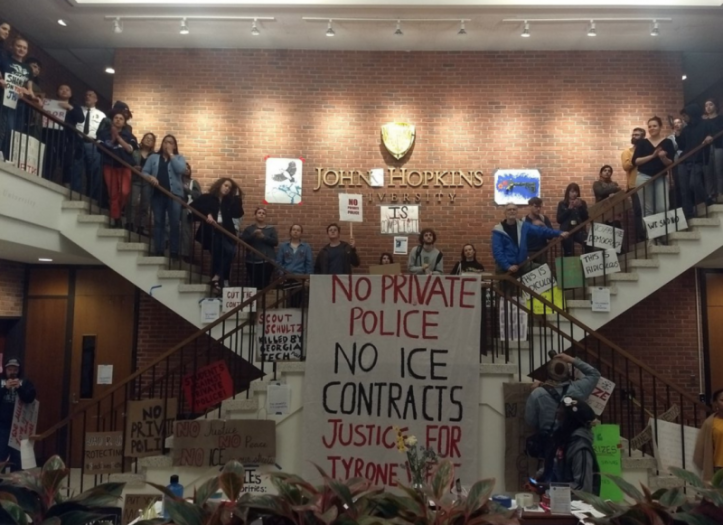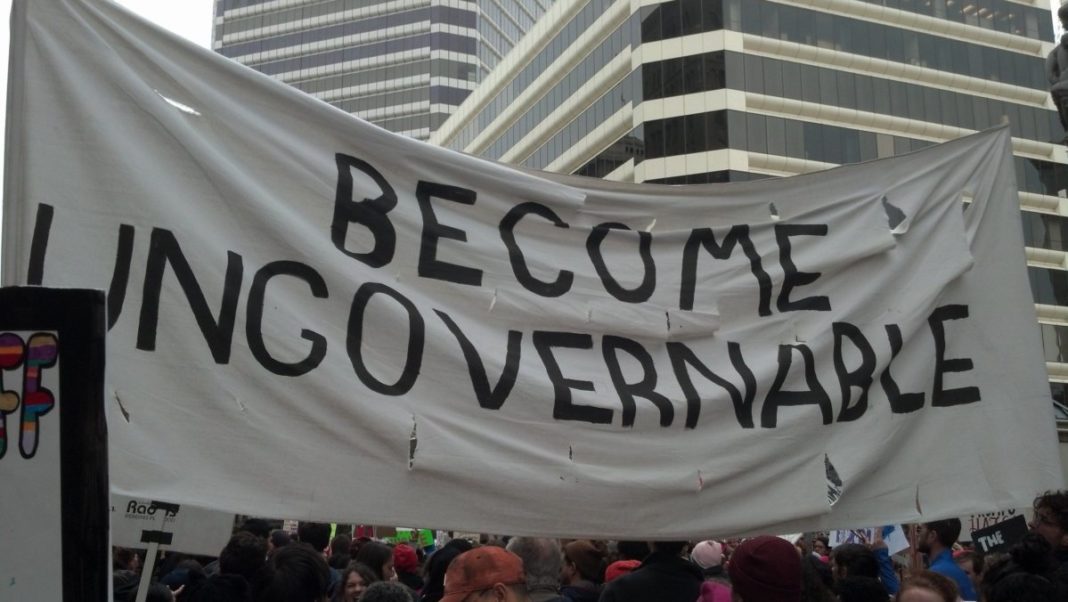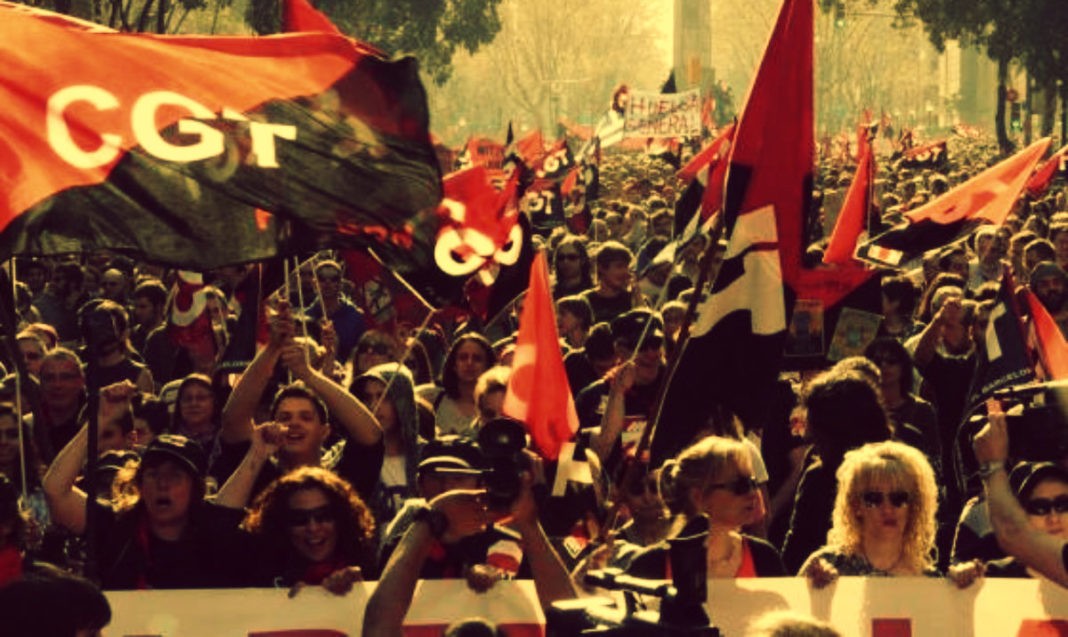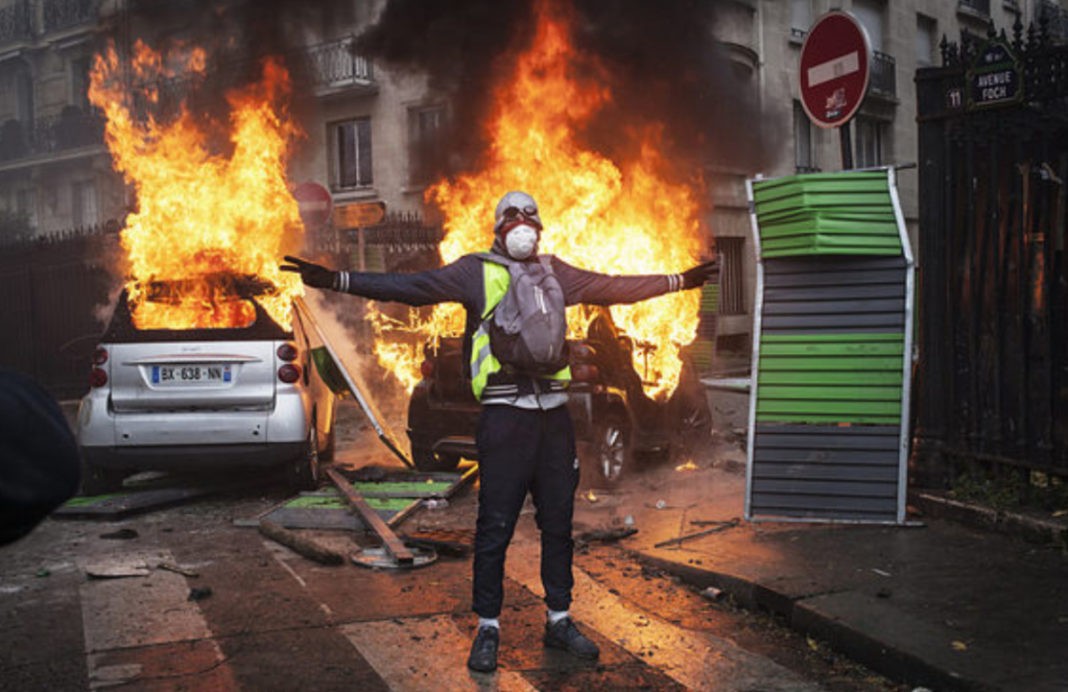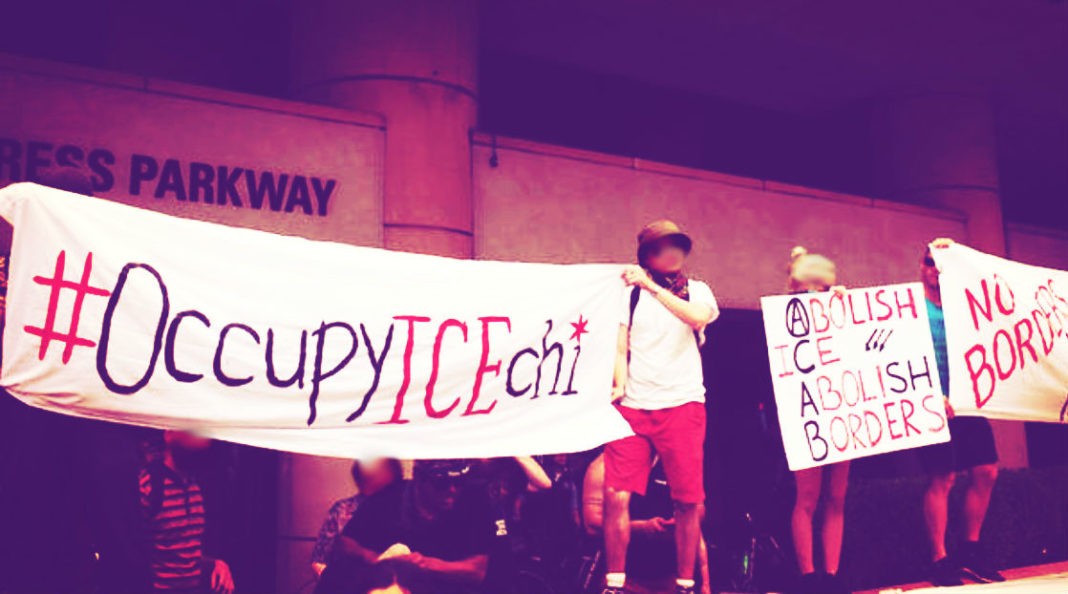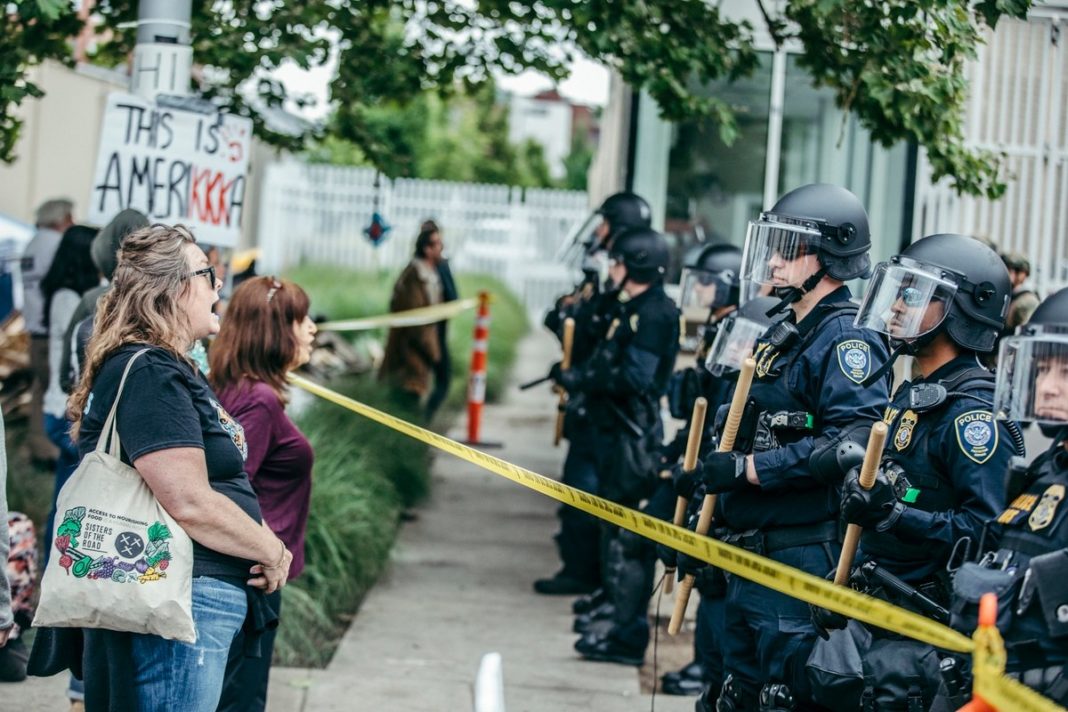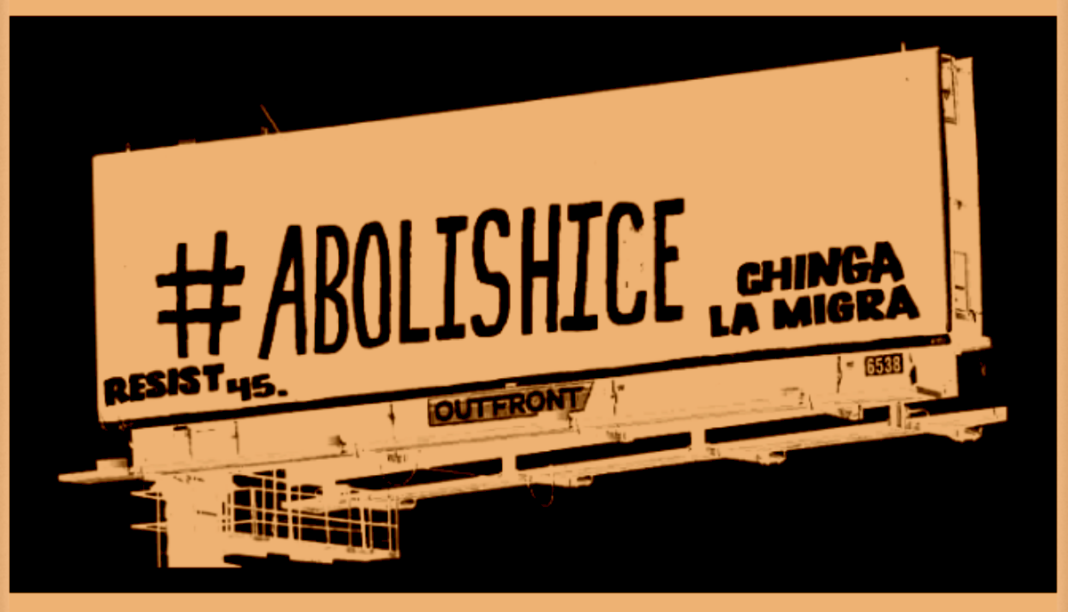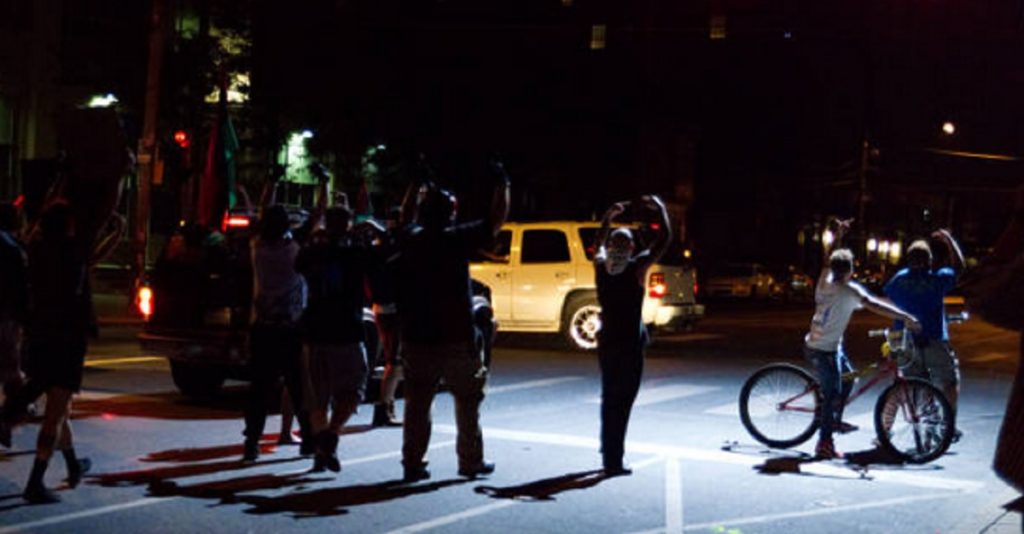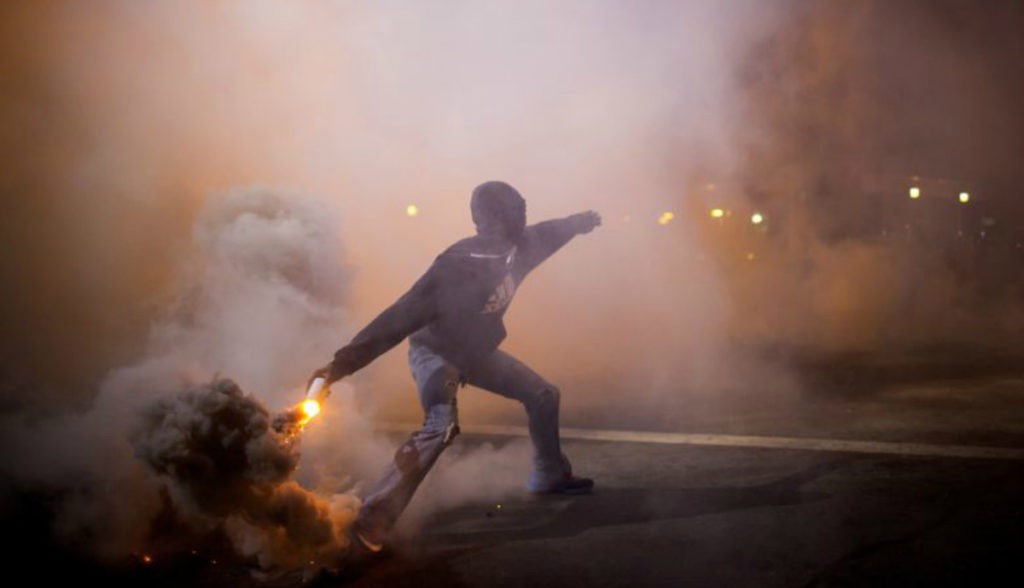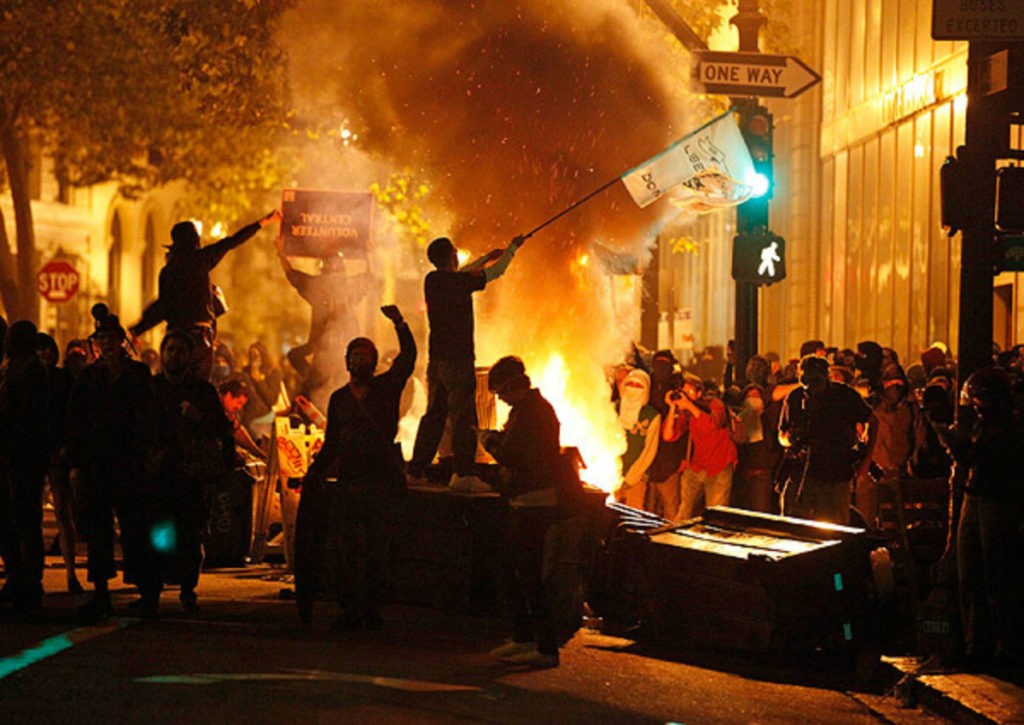from It’s Going Down
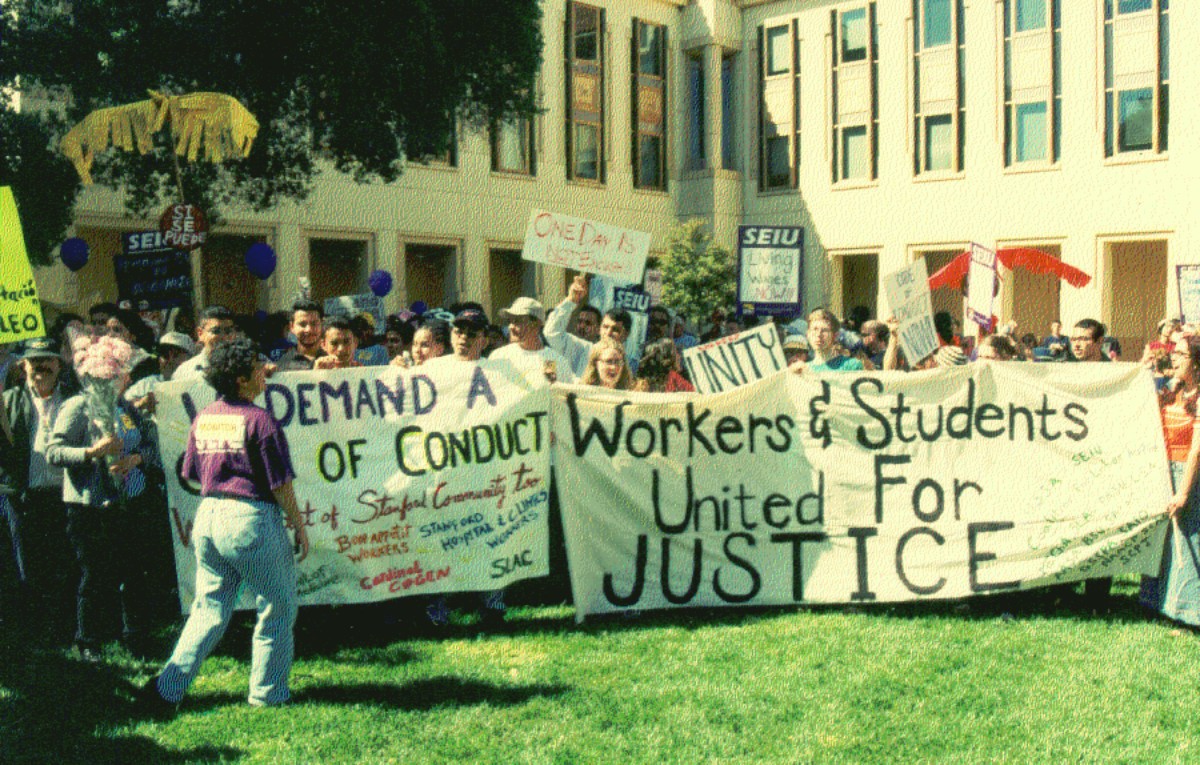
Interview from the Radical Education Department about the Student Labor Action Project (SLAP) in Philadelphia.
By Ivanna Berrios and Jason Koslowski
The 2019-2020 academic year is in full swing. And that means it’s time to think seriously about how we’ll build up radical campus struggles this year.
The following is Part 4 of the Campus Power Project, a series of interviews and writings about building radical, bottom-up class power on and across college campuses. For Part 1, see this; for Part 2, see this; for Part 3, see this.
INTRODUCTION TO THE INTERVIEW
In this interview, I spoke with Ivanna Berrios, a sophomore as well as an organizer with the Student Labor Action Project (SLAP) at the University of Pennsylvania in Philadelphia
SLAP is an organization that aims to build student-worker power “for the transformation of our community and material conditions to create a better reality” at Penn.
Ivanna explores key issues like:
- Ways to build radical solidarity between students and other kinds of campus workers
- Ways of grappling with retention, since many students leave for the summer and some of the most seasoned organizers graduate after a few years
- The tactics that college admins use to divide organizers against each other
- And SLAP’s unique answer to the dilemma of university funding
Since this interview during the spring semester last academic year SLAP has continued to develop, with changes in leadership and a focus on researching the working and learning conditions on campus. But the piece offers a snapshot of that ongoing development and SLAP’s efforts to develop student-worker power on campus.
JK: The Student Labor Action Project, or SLAP, has a longer history at Penn. Where did this most recent revival come from? What issue sparked it?
IB: SLAP has been officially on Penn’s campus since 1999. And they’ve done a lot of really great things in the past. They helped the dining hall workers gain a union—that’d be Teamsters 929—and also really involved in the campaign calling for Penn to pay PILOT [payment in lieu of taxes]].
In the past couple of years, it was mainly spearheaded by upperclassman, so when those upperclassmen graduated, SLAP membership kind of atrophied. It never really disbanded officially, it just had different waves of resurgence.
And the most recent wave that I’ve been involved in really started a couple of months ago in February, because the director of Penn Dining stopped permitting the celebration of Black History Month. This was in response to controversy at U Chicago and other campuses, where the celebrations were considered stereotypical. That was their claimed reasons for not allowing the campus workers to celebrate, even though the workers themselves said that they did want to do things for Black History Month.
One of our core members of SLAP, Michelle, is very very close friends with some of the dining hall workers. She was hearing their grievances, so we organized a direct action on campus just to show solidarity to say that we saw how Penn Dining was disrespecting the wishes of the dining hall workers.
That was back in February, but that wasn’t officially SLAP. We did a rally on campus where the dining hall workers spoke about how Black History Month is important to them, and how they were upset that Penn wasn’t allowing them to celebrate it or acknowledge it. And that basically kick-started a conversation about how Penn doesn’t listen to the dining hall workers in general, about their disrespect in the workplace. We started learning more about subcontracted labor. Penn subcontracts through Bon Appetit for certain dining halls, and the Bon Appetit workers are not technically Penn employees. And those workers are underpaid. They’re disrespected. They don’t get health benefits and education benefits. And then we connected to Villanova USAS, United Students Against Sweatshops. They really helped us a lot in providing a blueprint for how to restart an organization. We had organizing workshops and we did flyering and outreach.
So the most recent resurgence of SLAP had was catalyzed by the Black History Month event, and then it was Villanova USAS that fanned the flames, and we became an independent collective of students who were trying to continue SLAP’s legacy of working in tandem with the workers.
JK: What do you see as SLAP’s basic goals, both short-term and long-term?
IB: This semester we’ve been focusing on relationship-building, direct actions, and education. A lot of students on campus don’t realize that [campus] workers are being exploited to the extent that they are. So it’s been a lot of flyering, a lot of getting direct quotes and numbers from the dining hall workers. That’s our plan for now for the summer, research and building a base of people who support us.
Next semester [in fall 2019], we’re hoping to launch a direct campaign of antagonizing the administration, to get Penn to apply pressure to Bon Appetit. Because Bon Appetit is headquartered in California, so it’s really hard to apply pressure directly. Among our long term goals is to end all subcontracted labor on campus. It’s not just Bon Appetit, Bon Appetit is just what we focused on. But there are other subcontracted workers, and they’re also facing similar issues: they don’t receive the same benefits that direct Penn employees do. And we also talked about eventually having a living wage campaign so that every worker on campus would have a living wage, including grad students, including cleaning services. A long term goal is definitely to branch out into all types of workers on campus.
JK: Sometimes it seems as though there’s a tendency for campus struggles to focus mostly, or only, on direct actions like sit-ins. But SLAP is taking a more careful and long-term approach. Why focus on the slower base-building instead of focusing mostly on flashier tactics like a sit-in?
IB: Because we were working in tandem with the workers. We always want to consider what they want and what they feel comfortable with and the timeline they foresee. Right now, if we were to escalate without having a base, and just go out and have our small group of people who really believe in the cause, then there really would be a chance of backlash on the workers.
And it’s because our goals are so long term, so big. Eventually we want to end all subcontracted labor. We’re trying to see how we can build to that, and not just assume we can get that off the bat. Because it is a little unrealistic to think that we could just show up to the president’s office and demand that they end subcontracted labor.
I remember talking to a former slap member, Devon. She said, “Don’t launch a campaign unless you know you’ll have a good probability of winning.” That really stuck with me.
JK: So do you think it’s important to organize mostly around one particular campaign on a campus?
IB: Well, a problem that has faced SLAP in the past is that it has always been very it’s been very specifically campaign-oriented like other campus groups. It’s been its strength in that it always has a forward-thinking vision and there’s always the next thing to move on to. But it also means that once a campaign is over, regardless of success, the group will lose its audience after the campaign, because that was what was driving the whole group.
So we’re trying to make sure that that doesn’t happen to us, by having campaign after campaign rather than just one long enduring campaign. We want to make sure that it’s a succession, so that people don’t lose the group once the first campaign ends like they have in the past.
JK: The SLAP revival came through a member’s connection to the dining hall workers. How did your comrade make that connection? It can be tough on a campus to connect students and campus staff, since they’re (intentionally, it seems) kept so isolated from each other.
IB: Actually, the relationship was very organic. This member’s name is Michelle and she is a senior right now. So she’s had a lot of time to get to know the dining hall workers. And she’s also very outgoing and very friendly. She just happened to frequent one of the dining halls that subcontracted workers—Hillel—a good amount. And then through that she befriended the dining hall workers. And it’s funny enough, a lot of students don’t know a lot about the conditions of the workers, though a lot of students do form those organic relationships, just because, especially as freshmen, they see the dining workers every day, and they ask “Hi, how are you?” I wouldn’t say the majority 04:04 of students do that, because a lot of students at Penn can be very elitist and dehumanizing, and just see them as invisible sources of labor that can feed them. But there are definitely another group of people.
What differentiated Michelle was that she is very politically radical. Um, and I would say most of Core is. And so through those organic conversations— “Hi, how was your day”—it would come up: “Oh, this is happening.” One of the dining hall workers’ son was shot by police. He’s OK now, he had to go through a lot of physical therapy. But it was a really large financial strain on the family, and Michelle started a Go Fund Me to raise money, not necessarily from an organizing standpoint.
Something SLAP has really been trying to work on is building those relationships, so that we don’t have just one point person who’s friends with the dining hall workers while the rest of us don’t really know them. So we’ve been pairing up core members with dining hall workers, having them text them, reminding them about events to come out to, reminding them about meetings. We had a pot luck recently which some of the dining hall workers came to. It wasn’t even a structured meeting, we just all brought food and hung out. We’re just trying to build up those relationships.
Actually, though, that dining hall worker had been involved with SLAP for a long time. He’s a big leader among the dining hall workers at Hillel. And so he goes to all our meetings, or most of our meetings and he knows former SLAP members, and he’s familiar with Teamsters 929, and so just being friends with him really opened the door for us.
JK: I know this was an organic, almost accidental connection with the dining hall workers. But I also see a method coming out of this connection: finding ways to help break break down the walls of separation between students and campus workers, in more informal ways (everyday conversation, potlucks) and more formal ways (shared meetings). And then helping develop those relationships in more political directions.
IB: Yeah, that was really important for us. There’s a power imbalance between the students and the workers, and we didn’t want it to say, “We are the Student Labor Action Project, we have come to save you!” and have the workers say, “Who the fuck are you?” So we really tried to focus on building those relationships,
It is a friendship, but it’s also a politicized friendship. Because we really needed them to trust us for them to tell us the details of what was happening in their working conditions. I don’t think we could’ve done that without that organic process. I think it was founded upon just seeing the humanity and not necessarily seeing them as political subjects that we have to radicalize. That I think can sometimes be a perspective that some organizers and leftists take, and it comes from a good place, but it can be dehumanizing.
We first built those relationships with the dining hall worker, who like I said is a natural leader, and with a shop steward, and they tell the other workers. So there’s also that other element, where they trust us because they trust their fellow workers and those workers trust us. Because we can’t get to every worker, realistically. But we can get to the leaders in the workplaces who other co-workers trust.
JK: One of the major tactics that admins use against campus organizers is to pit different kinds of campus workers against each other: students against campus staff, staff with more benefits against staff with less benefits, and so on. Can you say how SLAP is trying to bridge gaps between those kinds of workers?
IB: Yeah, they’ve even been trying to pit students against students. We were recently in a meeting with Pam, the director of dining hall operations at Penn, as well as one person from the united minority students council, one person from Lambda, which is the umbrella LGBTQ group, one person from the umbrella African American students’ group, and one person from the Latina coalition. The meeting was in regards to the Black History Month event. We spoke to the people from the other student groups before the meeting, luckily. And we were able to see that most of them were on our side.
Pam didn’t want to talk about labor, she wanted to talk about diversity, and how they could be more culturally sensitive in the future. And every time SLAP would bring up the general disrespect of the admin towards the workers, she would say, “Oh, I think you need to stop derailing the meeting. Let’s see what [the other student representatives] think.” And they were like, “We support them!” Basically, the admins are trying to pit our group, the radical wing, against the more moderate, “reasonable” student body representatives, and it didn’t work, luckily. Because we had spoken to them and had them on our side first. They try to pit everybody against everybody, in any possible way, just to make sure we’re not talking to each other and not antagonizing them.
JK: That highlights how crucial it is for organizers to be reaching out and connecting to different kinds of student groups before confronting the bosses, so that admins can’t weaponize the idea of “diversity” against campus workers.
IB: The administration will use it as a weapon against grievances in general. Because after the meeting, then, they can say, “Oh, we met with students, we got their insight,” even if students didn’t necessarily walk away from the meeting feeling listened to or felt like we made any progress. And that’s definitely been a trend in the past. Someone actually brought that up in the meeting. Someone from the Lambda Alliance brought that up as a concern, saying “I just want to make sure you [admins] don’t release a statement saying that you met with us and listened to our concerns. Because I don’t feel like we’re being listened to.”
JK: What’s been the most effective tactic for building up SLAP so far, for getting more people in?
IB: I think the most successful has been our worker/student meetings, where um the workers come to meetings and we talk about their conditions and talk about what they want changed. And I think those have been the most successful in getting people invested. Afterwards we try to follow up with people, especially new people after the meetings. For the most part, those meetings have been the ones where people say, “I didn’t realize the extent of the exploitation, and hearing it directly from the workers was really, it really changed things for me, and I really want to get involved.” We’re not trying to slip into a purely emotional plea. It’s more that, when you see the anger of the workers and the frustrations of the workers, and you see them face to face, and you ask them questions, and you learn more personally, it makes you feel a lot more connected to the struggle, not just seeing it on paper. I think that has been the most successful at broadening our base.
JK: Can you say a word about the problem of student retention? One of the things I’ve run into organizing on campuses is that students go away for the summer, and some of the most experienced people graduate each year. What are ways to deal with this issue?
IB: That’s the biggest pitfalls to organizing. It’s cyclical. And it’s just so hard to keep people. What we’ve been trying to do is make a lot of spreadsheets to keep information on people. I mean that sounds creepy, but we’re really trying to make sure we don’t lose people. So we’ve been keeping track of who’s going to stay over the summer, we’re focusing on them. we’ve been keeping track of freshmen and sophomores, and we’ve been focusing on them for the one on ones and the follow up texts.
And we also try to build connections among the students themselves, because a lot of times, a lot of groups on campus can feel really pre-professional or depersonalized or can feel you’re only in it to add to your resume. So we had a potluck just yesterday where we all just hang out. And we try to just hang out and be friends and keep ourselves accountable to each other in that way. Especially core [members]. We weren’t even friends before but now we’re all tight. We would almost force it at the beginning: we’d be like, “OK, we have to build community, let’s hang out.” So we’ve just been trying to make sure that people feel invested because there are hundreds of student groups you could join and people are always juggling them.
JK: And I would think that because of this issue of retention, it’s especially important to build long-lasting relationships with campus staff workers who live in Philly, since they’re going to be longer term than a four year student, and they are around in the summers, too.
IB: Yeah. That dining hall worker I mentioned has been an important and a really great resource. And like he’s been a great resource because he was involved with SLAP earlier and then when all the momentum from SLAP graduated, he was still there. And so when this new resurgence of SLAP happened, he was there to help us out, using his past experience of working with the students.
JK: Another issue for campus organizers is funding. Groups face a dilemma. They can be officially recognized, and so get funding from the college—but that comes with faculty oversight and can blunt a struggle’s more radical edge. Or they can refuse to be recognized, but give up college funding, which could have helped a group grow and develop. How has SLAP navigated the problem of funding?
IB: We’re acknolwdged by the university—-but we’re different from other student groups, in that we don’t get funding from the university. So we don’t necessarily have faculty advisers.
We don’t want to be tied up with that type of bureaucracy. But at the same time we do indirectly receive money, just because some groups really support our message. They’ll get funding and give to us, kind of secretly. They’ll get funding to buy food for an “event” they’re having, but the event they’re having is to have us. So we’re not necessarily “clean” from university money but we are trying to avoid those those complications.
